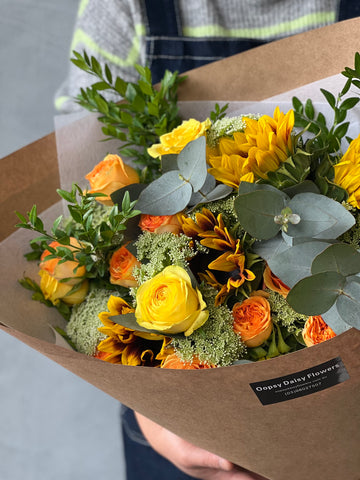In moments of loss and sorrow, expressing condolences becomes an integral part of human connection. Among the myriad of gestures, sympathy and funeral flowers stand as timeless symbols of support, comfort, and remembrance. Selecting the right flowers for such occasions requires thoughtfulness and sensitivity. This guide aims to illuminate the significance of sympathy and funeral flowers, offering insights into their meanings, appropriate choices, and etiquette.
Understanding the Significance of Sympathy and Funeral Flowers: In times of grief, words often fall short, and it is in these moments that gestures take precedence. Sympathy and funeral flowers serve as tangible expressions of empathy and solidarity. They convey unspoken emotions, offering solace to the bereaved and honoring the memory of the departed. Understanding the significance of these floral tributes underscores their importance in providing comfort during periods of mourning.
The Meaning Behind Sympathy and Funeral Flowers: Each flower carries its own significance, making the selection process deeply personal and meaningful. Roses, with their enduring beauty, symbolize love and reverence, making them a popular choice for funeral arrangements. Lilies, representing purity and innocence, offer a sense of peace and tranquility amidst sorrow. Meanwhile, chrysanthemums embody sincerity and support, making them fitting tributes to the departed and their loved ones.
Choosing the Right Flowers for the Occasion: When selecting sympathy and funeral flowers, it is essential to consider both the preferences of the bereaved and cultural customs. Opting for muted and elegant arrangements, such as white lilies or orchids, often reflects a sense of reverence and solemnity. Alternatively, incorporating the deceased’s favorite flowers or colors can personalize the tribute, celebrating their unique spirit and legacy. Additionally, considering religious or cultural symbols can further enhance the meaning behind the floral display, ensuring it resonates deeply with those in mourning.
Etiquette Surrounding Sympathy and Funeral Flowers: Navigating the etiquette of sending sympathy and funeral flowers requires tact and sensitivity. It is customary to send floral arrangements directly to the funeral home or the family’s residence, accompanied by a heartfelt note expressing condolensces flowers. Timing is also crucial, with flowers typically sent in advance of the funeral to allow for proper display. In some cases, families may request charitable donations in lieu of flowers, respecting their wishes demonstrates thoughtfulness and respect for their grieving process.
Expressing Condolences Through Flowers: The act of sending sympathy and funeral flowers transcends language barriers, offering a universal means of expressing condolences. Whether presented as a simple bouquet or an elaborate arrangement, each bloom carries with it a message of empathy and support. For those unable to attend the funeral in person, sending flowers serves as a tangible way to convey heartfelt sentiments from afar. Moreover, the presence of floral tributes at the funeral provides a visual reminder of the community’s collective embrace, offering comfort to both the bereaved and attendees alike.
Honoring the Memory of Loved Ones: Beyond their immediate comfort, sympathy and funeral flowers serve as lasting tributes to the memory of the departed. Following the funeral service, many families choose to preserve floral arrangements by drying or pressing the flowers, creating cherished keepsakes. Additionally, planting memorial gardens or dedicating trees in honor of the deceased ensures their legacy endures, blooming anew with each passing season. In this way, the beauty of sympathy and funeral flowers continues to resonate, offering solace and remembrance in perpetuity.
Conclusion: In times of grief, the language of flowers speaks volumes, offering solace, support, and remembrance. Sympathy and funeral flowers serve as poignant symbols of empathy, transcending words to convey the depth of human connection. By understanding their significance, choosing appropriate arrangements, and observing etiquette, we can honor the memory of loved ones and offer comfort to those in mourning. In the delicate dance of loss and remembrance, the timeless beauty of flowers continues to bloom, a testament to the enduring power of compassion and empathy.
Congrats! You’ve Finished This Blog.






